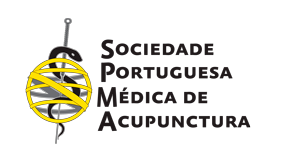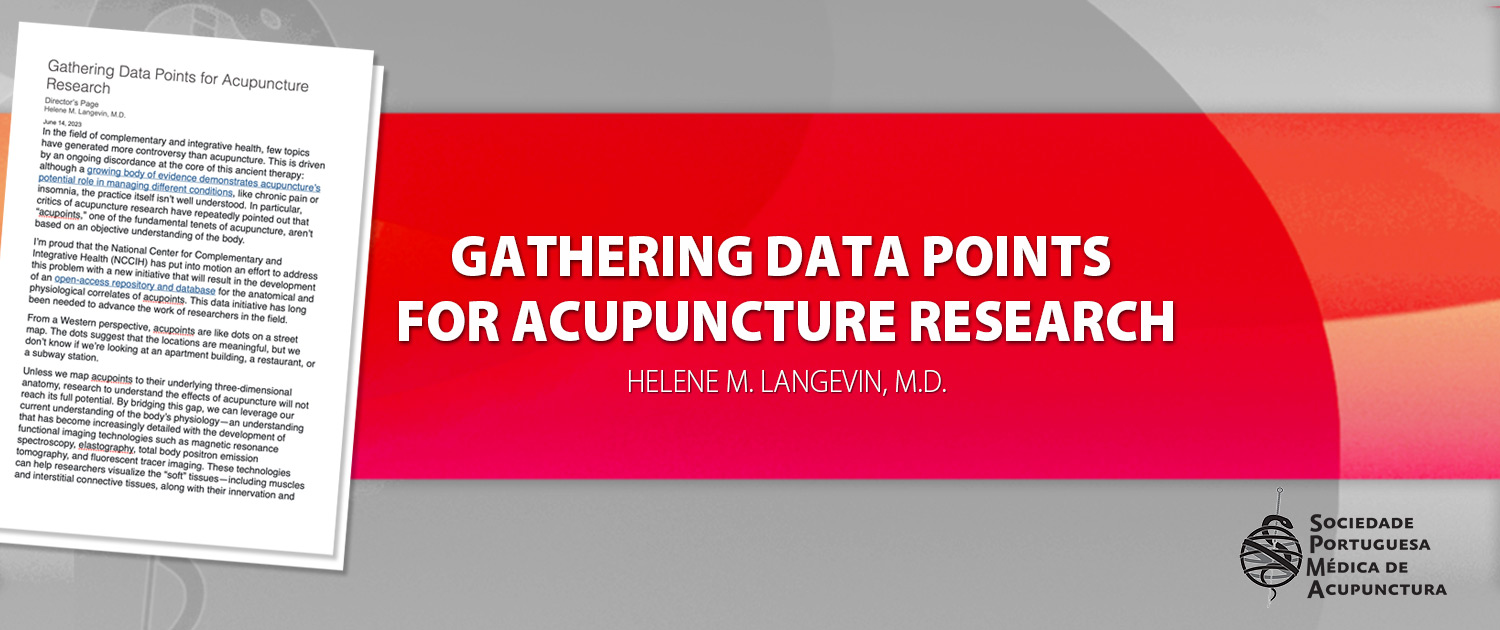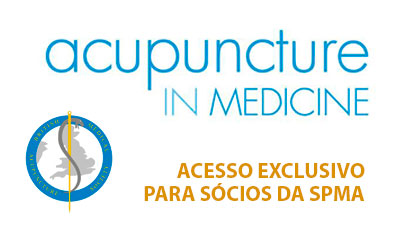In the field of complementary and integrative health, few topics have generated more controversy than acupuncture. This is driven by an ongoing discordance at the core of this ancient therapy: although a growing body of evidence demonstrates acupuncture’s potential role in managing different conditions, like chronic pain or insomnia, the practice itself isn’t well understood. In particular, critics of acupuncture research have repeatedly pointed out that “acupoints,” one of the fundamental tenets of acupuncture, aren’t based on an objective understanding of the body.
I’m proud that the National Center for Complementary and Integrative Health (NCCIH) has put into motion an effort to address this problem with a new initiative that will result in the development of an open-access repository and database for the anatomical and physiological correlates of acupoints. This data initiative has long been needed to advance the work of researchers in the field.
From a Western perspective, acupoints are like dots on a street map. The dots suggest that the locations are meaningful, but we don’t know if we’re looking at an apartment building, a restaurant, or a subway station.
Unless we map acupoints to their underlying three-dimensional anatomy, research to understand the effects of acupuncture will not reach its full potential. By bridging this gap, we can leverage our current understanding of the body’s physiology—an understanding that has become increasingly detailed with the development of functional imaging technologies such as magnetic resonance spectroscopy, elastography, total body positron emission tomography, and fluorescent tracer imaging. These technologies can help researchers visualize the “soft” tissues—including muscles and interstitial connective tissues, along with their innervation and vascular and lymphatic supply—that form the “underground” anatomical substrate for acupoints.
This long-awaited initiative is the culmination of years of discussion within the research community. In 1997, the National Institutes of Health (NIH) hosted a consensus panel discussion, which assessed the mixed evidence and embedded research challenges associated with studying acupuncture. Since then, the Society for Acupuncture Research (SAR), an organization I was proud to be involved in prior to my role at NCCIH, has led the field by hosting conferences and publishing white papers that have defined the major challenges facing the field and opportunities for progress.
One persistent barrier, however, was the unresolved question of whether acupoints should, or should not, continue to be used in research. In a 2018 paper I coauthored with my then-colleague Dr. Peter Wayne at the Osher Center for Integrative Medicine at Harvard Medical School and Brigham and Women’s Hospital, we argued that the failure to address the lack of clarity surrounding acupoints was a major obstacle to progress in the field. The issue of acupoints was further discussed during a 2019 NIH workshop. There was consensus among workshop attendees that maintaining the traditional language around acupoints is useful as “anatomical shorthand” to describe the traditional location of acupoints and is especially important for supporting communication between practitioners and researchers. Furthermore, there was agreement that a standardized database would help “translate” traditional acupoints into our conventional understanding of the body’s anatomy and physiology.
Following the workshop, NCCIH issued a request for information (RFI) to gauge the opinion of the community at large on these issues. More than 100 unique individuals and organizations contributed to responses to the RFI and enthusiastically supported the idea of developing an NIH-sponsored open-access repository and database for the anatomical and physiological ontology of acupoints.
Based on the responses to this RFI, NCCIH issued a request for applications for a “Research Resource Center to Build an Open-Access Repository and Database for Anatomical and Physiological Correlates of Acupoints,” which resulted in an award using the U24 cooperative agreement mechanism. I was delighted to announce the details of this award at the recent SAR conference. News of the award, entitled “Topological Atlas and Repository for Acupoint Research (TARA),” was enthusiastically received, especially since SAR will play a key role in the administration of the project.
The co-principal investigators, Drs. Vitaly Napadow, Rick Harris, and Karl Helmer, have mapped out a bold plan for the creation of a groundbreaking database that will function as a “Rosetta Stone,” translating between traditional knowledge and modern science. The goals of TARA are to:
- Collect and organize knowledge about the location and usage of acupoints from clinicians and acupuncture researchers
- Generate an in-depth mapping of acupoints using magnetic resonance imaging in live subjects
- Create functional anatomical models based on ApiNATOMY, a sophisticated toolkit for visualizing and organizing multiscale anatomical schematics with associated phenotypic information
- Build a relational database linking the anatomical location of acupoints to other important existing databases including SPARC (Stimulating Peripheral Activity to Relieve Conditions), HubMAP (Human BioMolecular Atlas Program), and OpenNeuro (an open archive for analysis and sharing of data from the Brain Research Through Advancing Innovative Neurotechnologies® [BRAIN] Initiative)
The TARA database will allow the integration of existing knowledge on the neural effects of acupuncture with new knowledge in other domains as it emerges, such as on the relationship of acupoints to paths of interstitial fluid flow. These elements will help researchers demystify poorly understood phenomena long described in classical acupuncture texts when referring to acupoints and meridians, such as “flow,” “stagnation,” or “blockages,” and help capture physiological processes that we simply haven’t examined closely enough or fully understood.
Acupuncture is an ancient modality that holds significant potential in helping people navigate today’s health burdens. Research to date has made great strides but has been bogged down for too long by terminology that’s not specific or detailed enough to support a sustainable and replicable model of study. By bringing together different layers of knowledge—traditional understanding of acupoints combined with the increasingly nuanced picture of the human body—we are poised for a new era of research. I hope researchers in the community will continue to watch this work unfold and look for ways to contribute to this essential resource for future progress.




